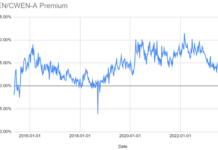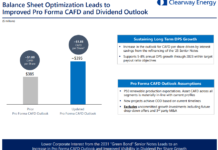Tom Konrad CFA
Disclosure: Long HASI, BEP. Short PEGI calls, NYLD calls.
When I was asked in an interview last month what I thought 2014 would hold for green tech finance, I said 2014 would be the year that “renewable energy finance comes of age.”
What I mean is that a new type of renewable energy investment is proliferating. Solar, other renewables, and energy efficiency investments are no longer limited to risky growth plays like Tesla Motors (NASD:TSLA.) There are now a number of yield focused investments available to small investors. As of last year, there was a mostly hydropower partnership: Brookfield Renewable Energy Partners (NYSE:BEP), an energy efficiency focused Real Estate Investment Trust (REIT): Hannon Armstrong Sustainable Infrastructure (NYSE:HASI), and a wind power focused “Yieldco”: Pattern Energy Group (NASD:PEGI.) There is also a solar crowd funding platform, Solar Mosaic.
In that same interview, I predicted: “I think that we will see a few publicly traded ‘yield cos’ (yield companies) in solar listed in 2014.” In other words, I predicted that 2014 would bring IPOs for two or more companies investing in solar and offering attractive dividend yields. On Wednesday, SunEdison Inc. (NYSE:SUNE) submitted a draft registration for what is likely to become the first US IPO of a solar yieldco. Other groups such as Grid Essence and CleanREIT Partners are currently raising funds for solar yieldcos to be listed in Canada.
The rapid increase of green yield vehicles in the US and abroad has made it possible to build a high-yield diversified equity mutual fund for investors frustrated with the growth-only character of the existing green mutual funds. I’m working with Green Alpha Advisors on launching just such a strategy (currently available to individual clients of Green Alpha in separate accounts.) We hope to follow this with a fossil free mutual fund following the same strategy if there is sufficient demand. I personally think that the yield, which is near 5%, is likely to stimulate that demand. When such mutual funds and exchange traded funds (ETFs) are available, it will create a new source of funding for green infrastructure companies, and further stimulate the growth of the sector.
Relative Pricing
Another aspect of an industry growing up is more rational relative pricing between stocks. I’ve highlighted the relative mispricings I saw among the current crop of green yieldcos on January 29th and the beginning of convergence on February 10th. The last week and a half has seen continued convergence, as you can see in the updated graph below, with data from 1/29 (palest circles), 2/10, and 2/19 (darkest):
The only significant move came from Hannon Armstrong, which was initiated by FBR Capital at Outperform. The analyst, Aditya Satghare, was quoted:
“We expect Hannon Armstrong to lead the industry in new financing structures in its core energy efficiency asset class while rapidly diversifying its portfolio into on-site renewable generation and other infrastructure-type assets. In our opinion, the convergence of energy efficiency and on-site generation should effectively double the company’s potential addressable market, and we estimate that this, coupled with an under-levered balance sheet and expanding net interest margins, should drive annual dividend growth of 20% over the next three to five years. Energy efficiency as an asset class is still in the very early stages of development, offering low loss rates and limited interest rate risk, and we believe that Hannon Armstrong should provide a strong diversification benefit to both specialty finance and other yield-oriented investors.”
He was even more bullish than I am, and set a price target of $20.
Conclusion
Solar has always been the poster boy for green energy. When SunEdison or another company successfully lists a solar yieldco in the US, green energy investing will finally have come of age. It will no longer only be for risk-tolerant stock jockeys, but will also have a place in the most conservative income portfolios.
This change should also benefit the clean energy industry. The lower interest rates unlocked by the access to retail capital should make renewable energy’s trade-off of higher capital cost for zero fuel cost increasingly attractive.
This article was first published on the author’s Forbes.com blog, Green Stocks on February 20th.
DISCLAIMER: Past performance is not a guarantee or a reliable indicator of future results. This article contains the current opinions of the author and such opinions are subject to change without notice. This article has been distributed for informational purposes only. Forecasts, estimates, and certain information contained herein should not be considered as investment advice or a recommendation of any particular security, strategy or investment product. Information contained herein has been obtained from sources believed to be reliable, but not guaranteed.









